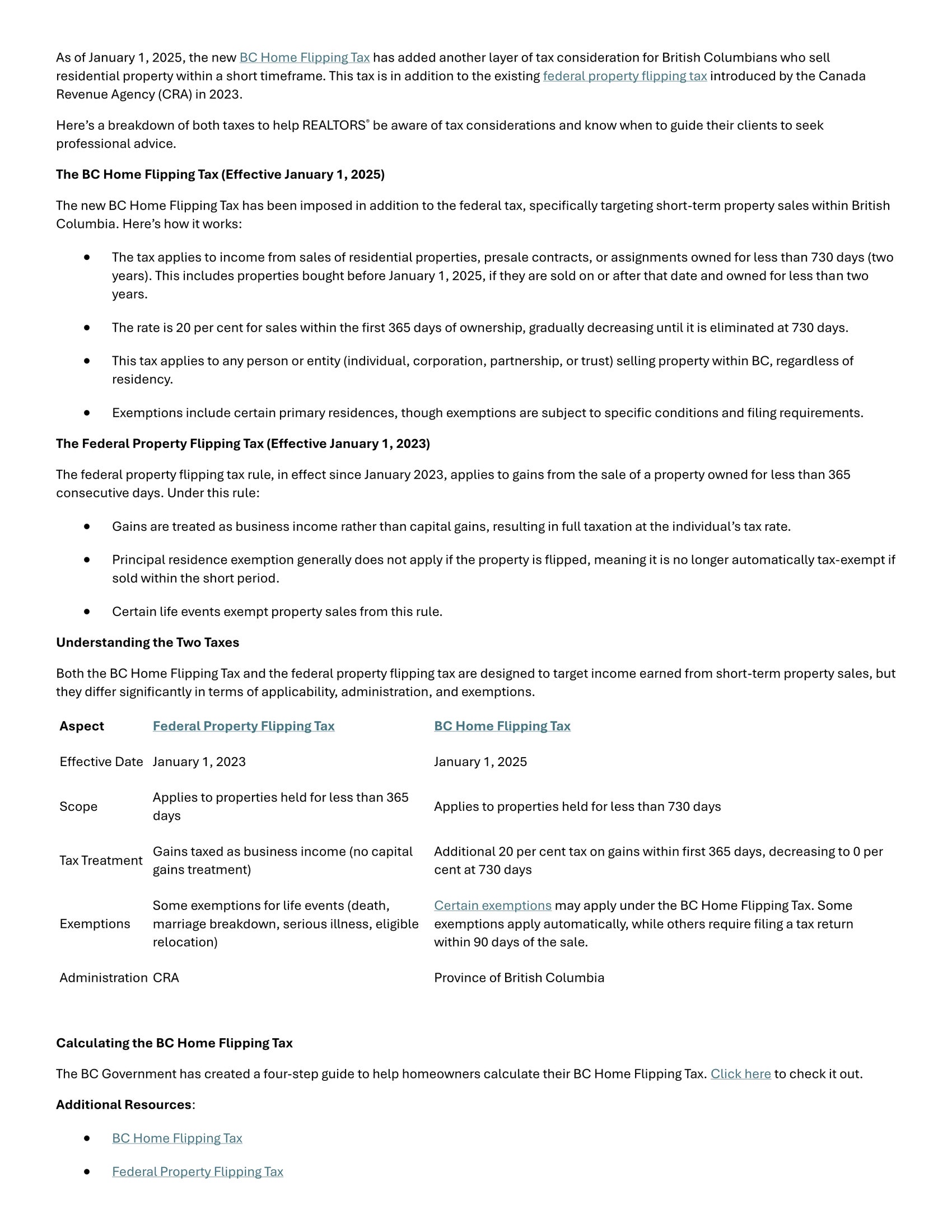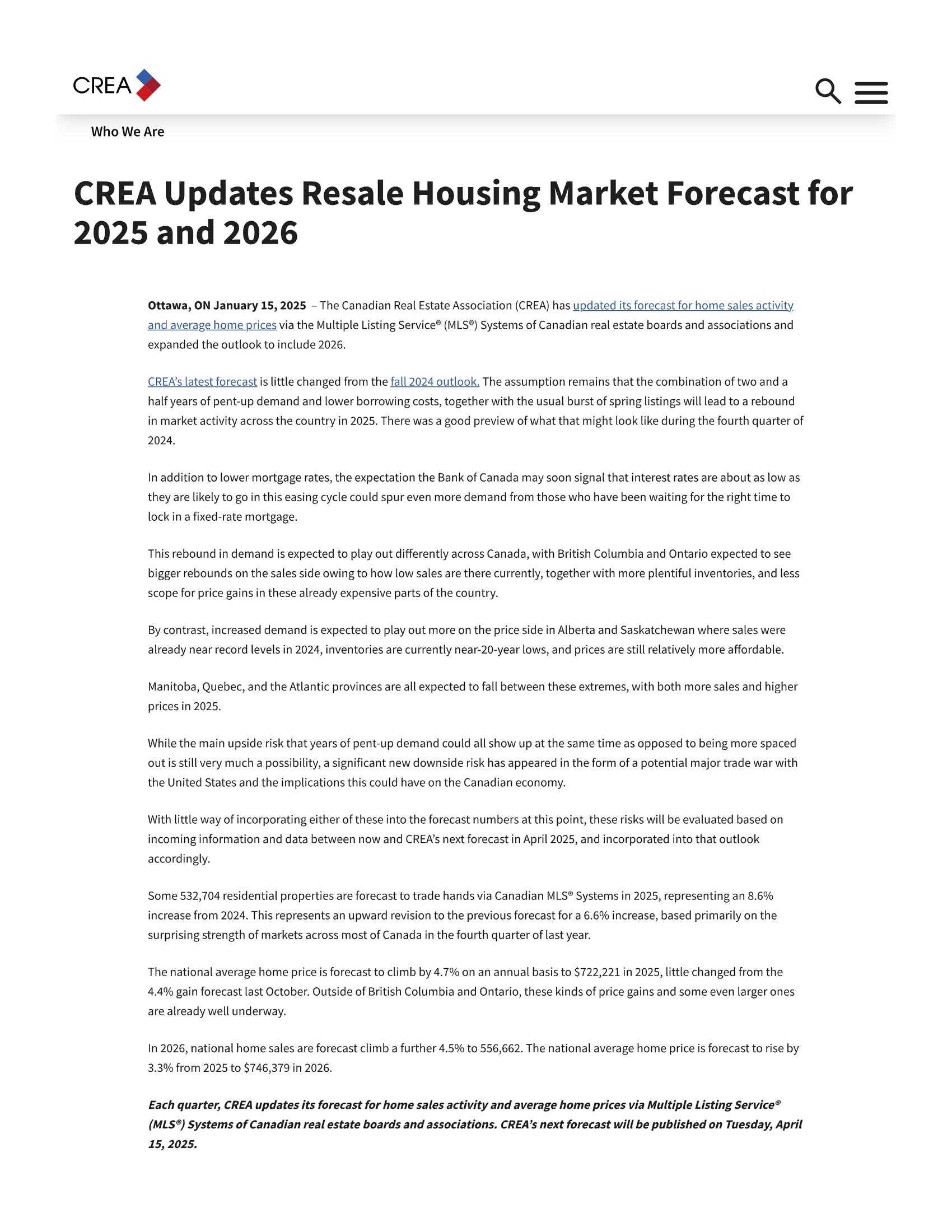The real estate market has been picking up in recent weeks, with more listings appearing in both the Cowichan Valley and Victoria as we move into the spring season. This month's newsletter is packed with key updates, including the latest market stats for both regions.
You'll also find insights and reports on:
• BCREA – Final quarter report
• BCREA – Potential impact of U.S. tariffs on BC housing
• Bank of Canada – Policy rate update
• BCREA – New BC Home Flipping Tax
• CREA – Market forecast for 2025-2026
Stay informed and ahead of the market with this essential update!
January 2025 Market Update: Single-Family Homes in the Cowichan Valley
Sales Activity:
A total of 42 single-family homes were sold in the Cowichan Valley during January 2025, marking a notable increase from 23 homes sold in January 2024 and up from 59 homes in December 2024.
Listings & Inventory:
The market saw 87 new single-family home listings in January, a bump of 24% compared to 70 listings in January of last year. As of the end of January, 172 homes were actively listed, up slightly from 161 homes available at the same time last year.
Pricing Trends:
• The average sale price in January 2025 was $797,826, reflecting a small increase from January 2024’s average of $773,230.
• Compared to December 2024’s average of $785,758, prices have strengthened a bit.
• For the 12-month period ending in January 2025, the median sale price stood at $777,000.
Annual Performance:
Over the past 12 months, 707 single-family homes were sold, which represents a 6% increase compared to the 666 sales in the same period ending in January 2024. The average selling price for the year remained virtually the same as the previous year with only a 0.4% increase.
Market Supply & Days on Market:
• The supply of homes was 4.7 months in January 2025, down significantly from 8.8 months in January 2024.
• Homes sold in January 2025 took an average of 71 days to sell, compared to 44 days in January last year.
This summary highlights the key market trends and performance for single-family homes in the Cowichan Valley, helping homeowners and buyers stay informed about the latest developments. Feel free to reach out for further details or if you need personalized advice!
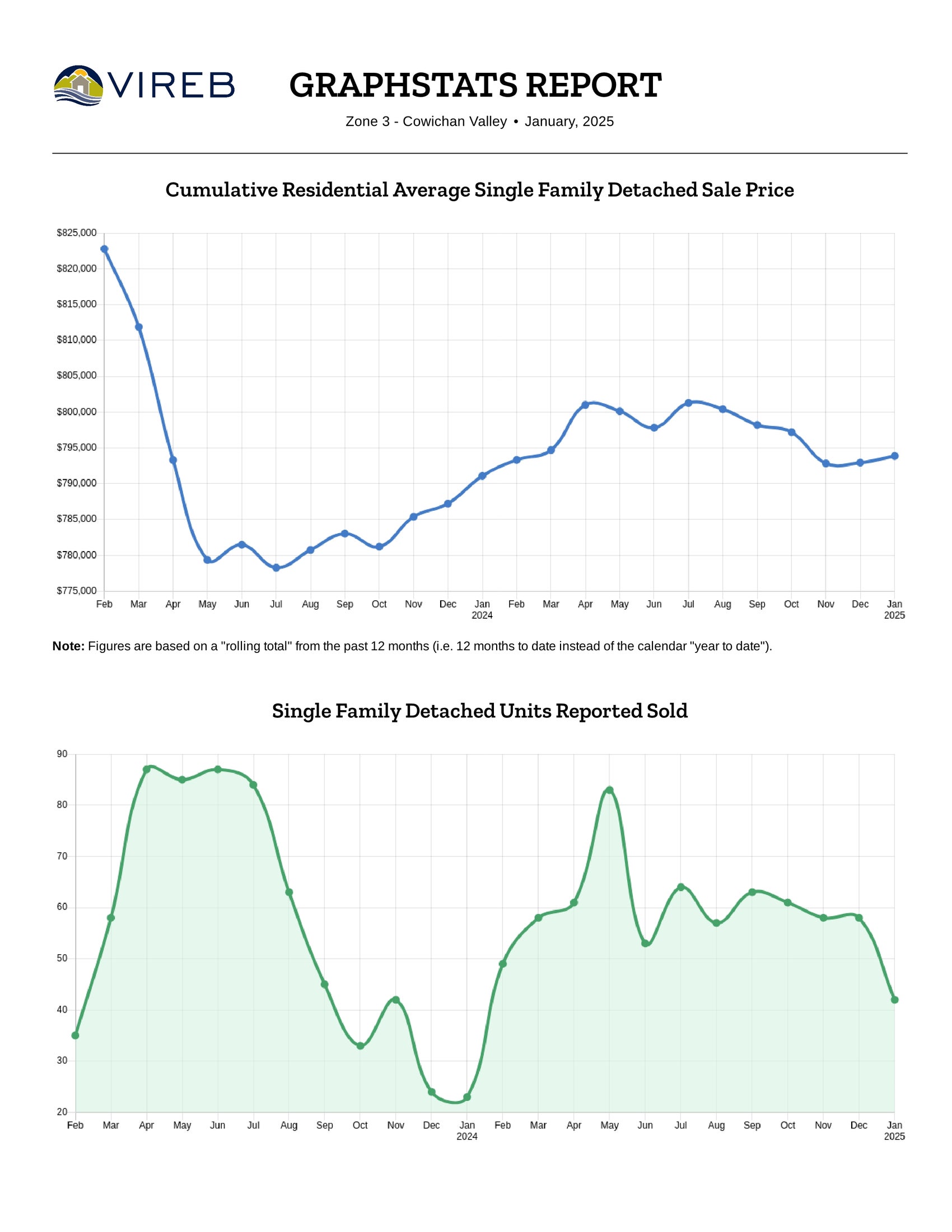
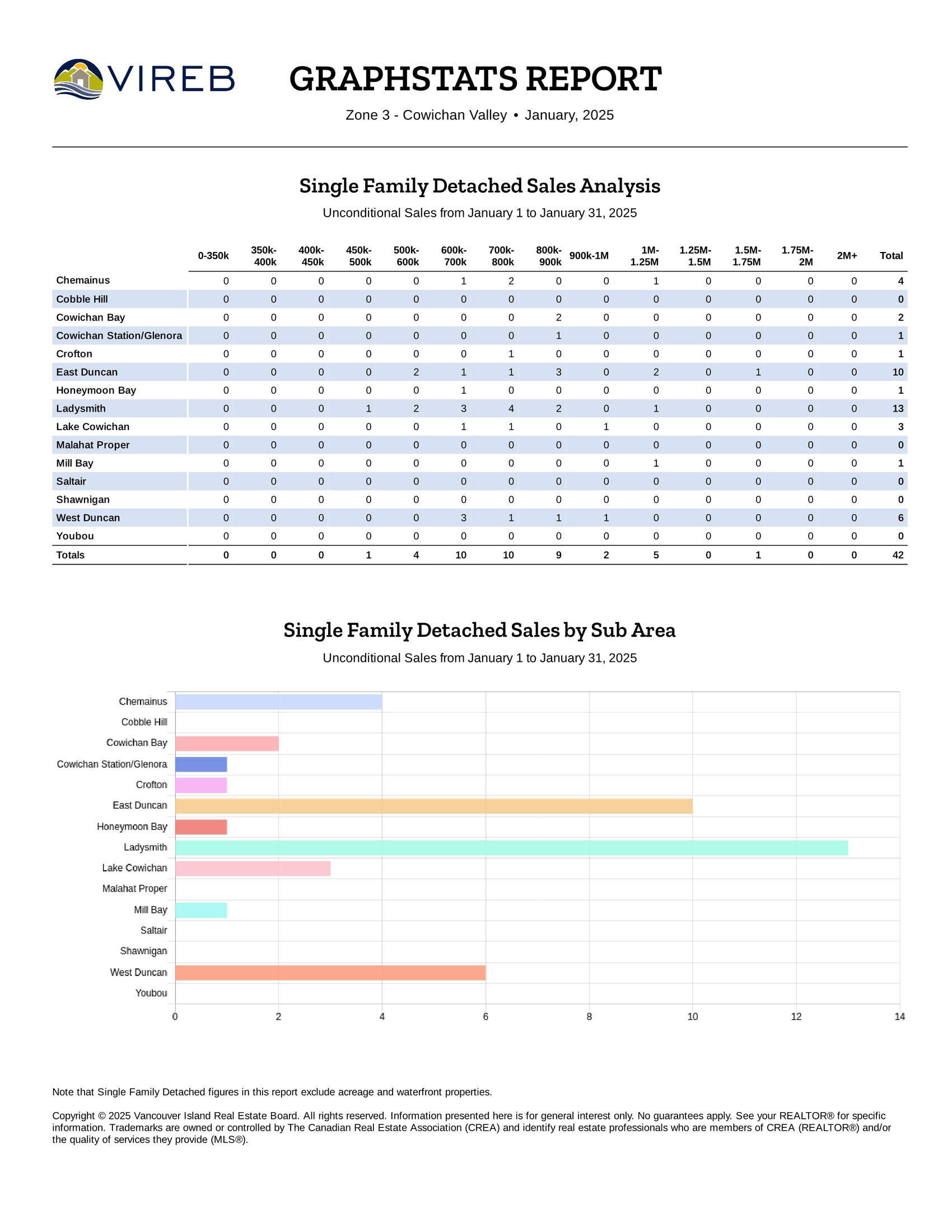
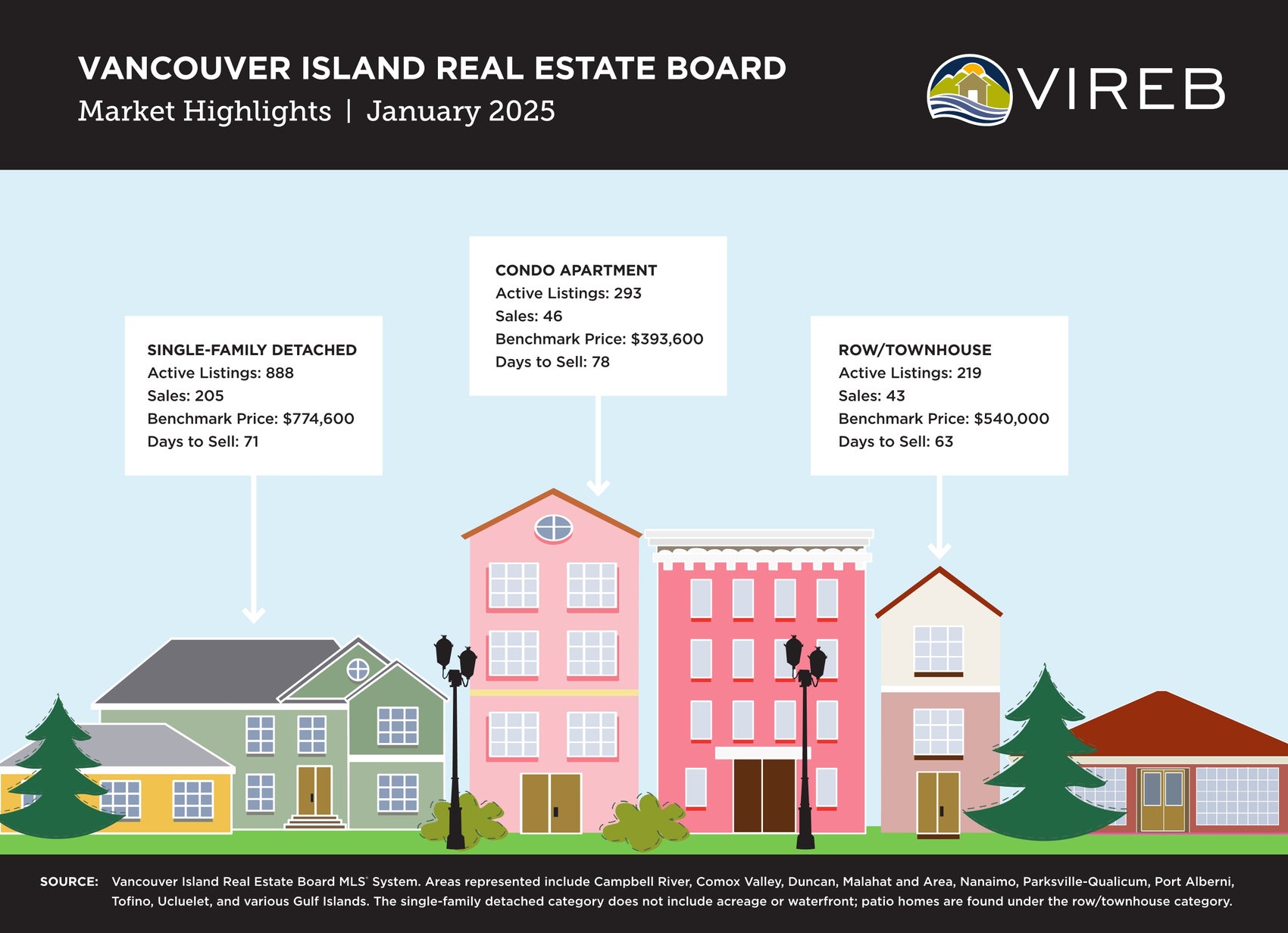
Condo & Townhome Market Update
Condominiums
In January, the condominium market showed a slight change with only 3 units sold, compared to 5 in December, and no change from the 3 units sold in January of last year. The average price for condo apartments over the past 12 months ending in January 2025 was $346,358 – a 4% increase over the same period last year's average of $332,849.
Townhomes
The townhome market experienced a downward trend with 6 sales in January, a decrease from the 12 units sold in December, and a 50% decrease from January 2024’s 12 sales. The average price for townhomes over the past 12 months ending in January reached $565,711, up just 0.15% from $564,858 during the same period last year.
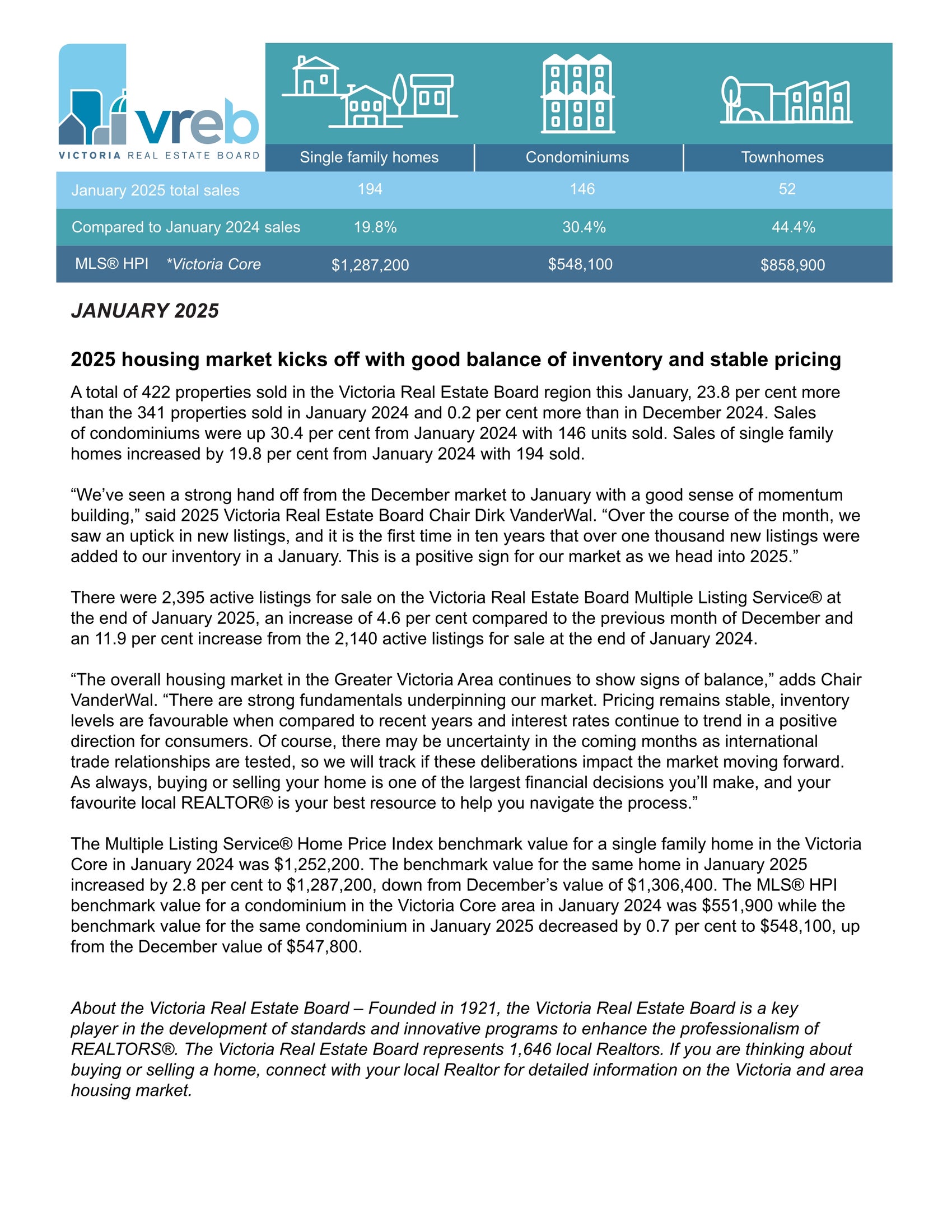
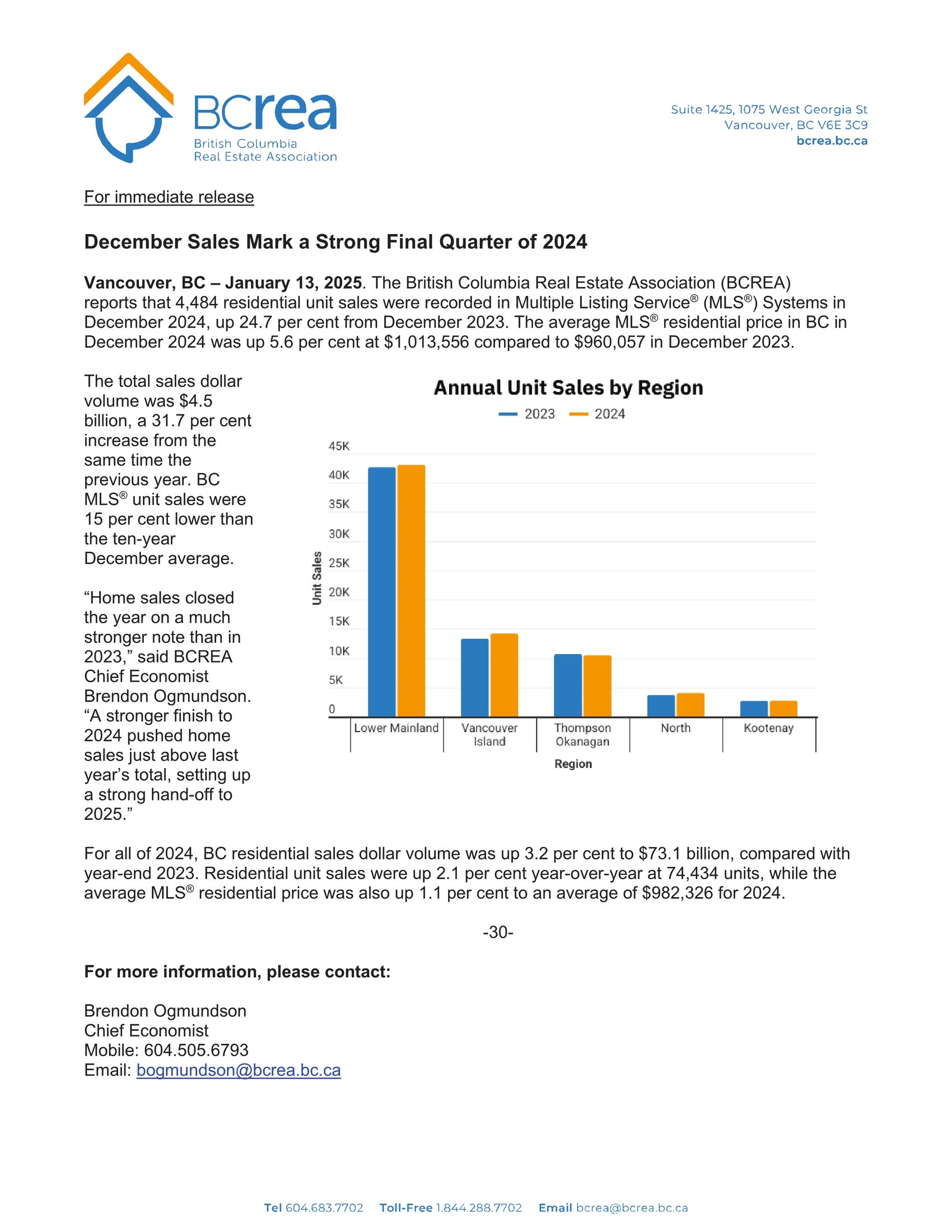

Choose Your Own (Mis)Adventure: How US Tariffs Could Impact BC Housing
February 4, 2025
Summary of Findings:
- A tariff on all Canadian imports to the United States would have serious consequences for the Canadian and BC economies.
- A 25 per cent tariff would push both the Canadian and BC economies into recession, and the impact could be compounded by a broader trade war and retaliatory tariffs by Canada.
- Under the most likely scenario, the BC housing market would see a temporary decline in activity before posting a robust recovery as mortgage rates decline substantially, thereby unleashing pent-up demand.
Until quite recently, the Canadian economic outlook appeared clear. After a relatively “soft landing,” Canada was braced for a stronger 2025, driven by higher consumption and business investment on the back of lower interest rates.
However, that outlook has become much cloudier following the results of the American election. More specifically, threats of tariffs from the newly installed American administration have sent bond markets, economists, and the Bank of Canada into a frenzy of uncertainty. Given the strong bilateral trade activity and integrated supply chains that underpin both economies, broad-based American tariffs, coupled with potential Canadian retaliation, could have serious implications for the Canadian economy and the housing market.
This Market Intelligence report seeks to unpack the uncertainty surrounding potential tariffs by exploring several potential tariff scenarios and their implications for the BC housing market.
For more information, please contact:
Brendon Ogmundson
Chief Economist

Bank of Canada reduces policy rate by 25 basis points to 3%, announces end of quantitative tightening
January 29, 2025
The Bank of Canada today reduced its target for the overnight rate to 3%, with the Bank Rate at 3.25% and the deposit rate at 2.95%. The Bank is also announcing its plan to complete the normalization of its balance sheet, ending quantitative tightening. The Bank will restart asset purchases in early March, beginning gradually so that its balance sheet stabilizes and then grows modestly, in line with growth in the economy.
Projections in the January Monetary Policy Report (MPR) published today are subject to more-than-usual uncertainty because of the rapidly evolving policy landscape, particularly the threat of trade tariffs by the new administration in the United States. Since the scope and duration of a possible trade conflict are impossible to predict, this MPR provides a baseline forecast in the absence of new tariffs.
In the MPR projection, the global economy is expected to continue growing by about 3% over the next two years. Growth in the United States has been revised up, mainly due to stronger consumption. Growth in the euro area is likely to be subdued as the region copes with competitiveness pressures. In China, recent policy actions are boosting demand and supporting near-term growth, although structural challenges remain. Since October, financial conditions have diverged across countries. US bond yields have risen, supported by strong growth and more persistent inflation. In contrast, yields in Canada are down slightly. The Canadian dollar has depreciated materially against the US dollar, largely reflecting trade uncertainty and broader strength in the US currency. Oil prices have been volatile and in recent weeks have been about $5 higher than was assumed in the October MPR.
In Canada, past cuts to interest rates have started to boost the economy. The recent strengthening in both consumption and housing activity is expected to continue. However, business investment remains weak. The outlook for exports is being supported by new export capacity for oil and gas.
Canada’s labour market remains soft, with the unemployment rate at 6.7% in December. Job growth has strengthened in recent months, after lagging growth in the labour force for more than a year. Wage pressures, which have proven sticky, are showing some signs of easing.
The Bank forecasts GDP growth will strengthen in 2025. However, with slower population growth because of reduced immigration targets, both GDP and potential growth will be more moderate than was expected in October. Following growth of 1.3% in 2024, the Bank now projects GDP will grow by 1.8% in both 2025 and 2026, somewhat higher than potential growth. As a result, excess supply in the economy is gradually absorbed over the projection horizon.
CPI inflation remains close to 2%, with some volatility due to the temporary suspension of the GST/HST on some consumer products. Shelter price inflation is still elevated but it is easing gradually, as expected. A broad range of indicators, including surveys of inflation expectations and the distribution of price changes among components of the CPI, suggests that underlying inflation is close to 2%. The Bank forecasts CPI inflation will be around the 2% target over the next two years.
Setting aside threatened US tariffs, the upside and downside risks around the outlook are reasonably balanced. However, as discussed in the MPR, a protracted trade conflict would most likely lead to weaker GDP and higher prices in Canada.
With inflation around 2% and the economy in excess supply, Governing Council decided to reduce the policy rate a further 25 basis points to 3%. The cumulative reduction in the policy rate since last June is substantial. Lower interest rates are boosting household spending and, in the outlook published today, the economy is expected to strengthen gradually and inflation to stay close to target. However, if broad-based and significant tariffs were imposed, the resilience of Canada’s economy would be tested. We will be following developments closely and assessing the implications for economic activity, inflation and monetary policy in Canada. The Bank is committed to maintaining price stability for Canadians.
Information note
The next scheduled date for announcing the overnight rate target is March 12, 2025. The Bank will publish its next full outlook for the economy and inflation, including risks to the projection, in the MPR on April 16, 2025.

